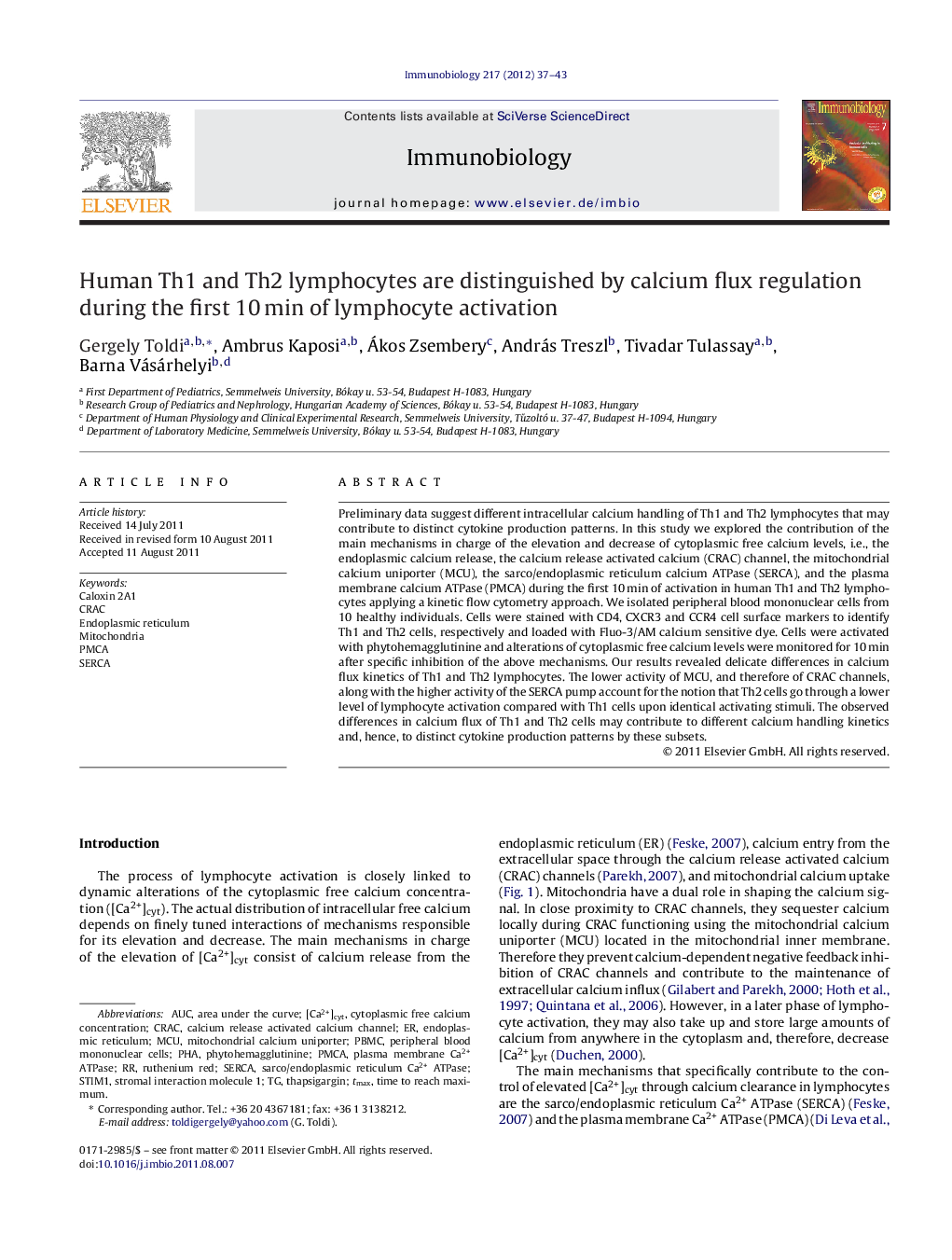| Article ID | Journal | Published Year | Pages | File Type |
|---|---|---|---|---|
| 10941113 | Immunobiology | 2012 | 7 Pages |
Abstract
Preliminary data suggest different intracellular calcium handling of Th1 and Th2 lymphocytes that may contribute to distinct cytokine production patterns. In this study we explored the contribution of the main mechanisms in charge of the elevation and decrease of cytoplasmic free calcium levels, i.e., the endoplasmic calcium release, the calcium release activated calcium (CRAC) channel, the mitochondrial calcium uniporter (MCU), the sarco/endoplasmic reticulum calcium ATPase (SERCA), and the plasma membrane calcium ATPase (PMCA) during the first 10Â min of activation in human Th1 and Th2 lymphocytes applying a kinetic flow cytometry approach. We isolated peripheral blood mononuclear cells from 10 healthy individuals. Cells were stained with CD4, CXCR3 and CCR4 cell surface markers to identify Th1 and Th2 cells, respectively and loaded with Fluo-3/AM calcium sensitive dye. Cells were activated with phytohemagglutinine and alterations of cytoplasmic free calcium levels were monitored for 10Â min after specific inhibition of the above mechanisms. Our results revealed delicate differences in calcium flux kinetics of Th1 and Th2 lymphocytes. The lower activity of MCU, and therefore of CRAC channels, along with the higher activity of the SERCA pump account for the notion that Th2 cells go through a lower level of lymphocyte activation compared with Th1 cells upon identical activating stimuli. The observed differences in calcium flux of Th1 and Th2 cells may contribute to different calcium handling kinetics and, hence, to distinct cytokine production patterns by these subsets.
Keywords
PMCAsarco/endoplasmic reticulum Ca2+ ATPaseSTIM1CRACtmaxThapsigarginMCUphytohemagglutininePHAPBMCAUC[Ca2+]cytruthenium redperipheral blood mononuclear cellsendoplasmic reticulumplasma membrane Ca2+ ATPasecytoplasmic free calcium concentrationSERCAMitochondrial calcium uniporterarea under the curveStromal interaction molecule 1Mitochondria
Related Topics
Life Sciences
Biochemistry, Genetics and Molecular Biology
Cell Biology
Authors
Gergely Toldi, Ambrus Kaposi, Ákos Zsembery, András Treszl, Tivadar Tulassay, Barna Vásárhelyi,
